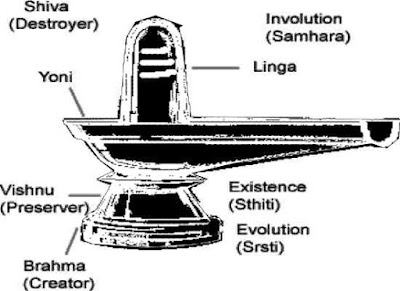Are There Really 33 Crore Gods in Hinduism?
So, what does the Vedas tell about the Hindu Gods
To start with, the Rig Veda mentions 3 Gods – Agni, on earth; Vayu in the air and Surya in the sky. However, further in the Rig-Veda itself this number is increased to thirty-three, of which 11 are said to be on earth, 11 in heaven, and 11 in mid-air.
Yes ’33 Crore Gods’ is a highly misinterpreted fact. The term ‘trayastrimsati koti’ mentioned in Atharva Veda, Yajur Veda, and Satapatha-brahmana, was misunderstood as 33 Crores. The term koti in Sanskrit has two meaning, one is ‘supreme’ and the other is Crore. So, somewhere in translation, we missed the basic fact that Hinduism has 33 Supreme Gods and not 33 Crore Gods.
But, who are these 33 Gods in Hinduism – What are Their Names?
According to Vedas there are 33 Devas. These Gods are seperated in the following pattern : 12 + 11 + 8 + 2. 12 is the number of Adityas, 11 are the number of Rudras, 8 is the number of Vasus and out of the two left, one is Prajapati, the Master of Gods, and other is a Supereme Ruler who is very powerful. This is not a made up theory but is well documented in Chapter 3, Part 9 of Brihadaranyaka Upanishad where Sage Yajnavalkya is questioned by Sage Sakalya,
Chapter IX—Yajnavalkya and Vidaghdha
Then Vidaghdha, the son of Sakala, asked him: “How many gods are there, Yajnavalkya?” “How many gods are there, Yajnavalkya?”
“Thirty—three.”
“Very good,” said Sakalya and asked again:”How many gods are there, Yajnavalkya?
Six.”
“Very good,” said Sakalya and asked again:”How many gods are there, Yajnavalkya?”
“Three.”
“Very good,” said Sakalya and asked again:”How many gods are there, Yajnavalkya?”
“Two.”
“Very good,” said Sakalya and asked again:”How many gods are there, Yajnavalkya?”
“One and a half.“
“Very good,” said Sakalya and asked again:”How many gods are there, Yajnavalkya?”
“One.” “Very good,” said Sakalya and asked:”Which are those thirty three gods?”
“The eight Vasus, the eleven Rudras and the twelve Adityas—these are thirty—one. And Indra and Prajapati make up the thirty—three.”
“Which are the Vasus?” asked Sakalya.
“Fire, the earth, the air, the sky, the sun, heaven, the moon and the stars—these are the Vasus; for inthem all this universe is placed (vasavah). Therefore they are called Vasus.”
“Which are the Rudras?” asked Sakalya.
“The ten organs in the human body, with the mind as the eleventh. When they depart from this mortal body, they make one’s relatives weep. Because they make them weep (rud),therefore they are called Rudras.”
“Which are the Adityas?” asked Sakalya.
“There are twelve months in the year. These are the Adityas, because they move along carrying (adadanah) all this with them; therefore they are called Adityas.”
“Which is Indra and which is Prajapati?” asked Sakalya.
“ The thunderclap is Indra and the sacrifice is Prajapati.”
“Which is the thunderclap?”
“The thunderbolt.”
“Which is the sacrifice?”
“The animals.”





















 ) and came to the conclusion that
) and came to the conclusion that 












0 comments: